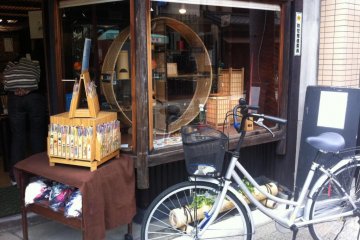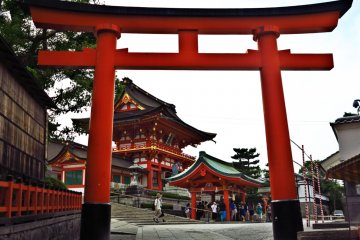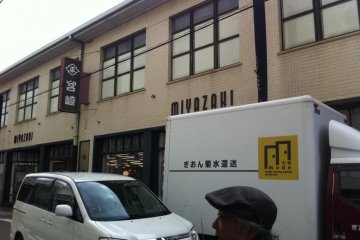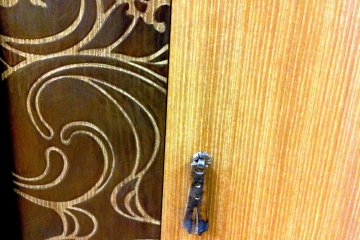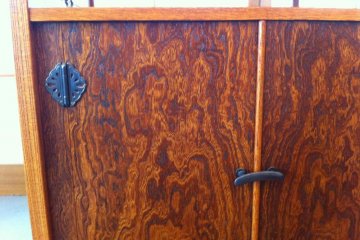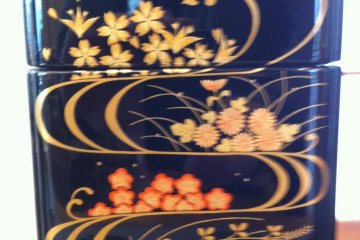When I got married I bought a century old antique tansu kimono chest for my wife. Being the masterpiece in the living room, it was a beautiful cherry brown stained five-drawer affair with Meiji period motifs on the hinges which stood the test of time. There was even a secret compartment to put all the accessories, like tabi ankle-high toe socks and folding fans.
However when she tried to fit her Heisei period (modern day size) kimonos in the drawers, we realized they weren’t wide enough to fit the kimonos properly. It made me think, what happened to all the other Meiji period tansu? Do people use tansu these days? And is there anyone left who makes tansu?
So with this in mind, I contacted Mr Nakano, the chairman of the Kyoto Handicrafts Volunteer Guide Association and prepared for my quest to find the modern day tansu.
A stroll away from the 500 year old Honke Owariya Noodle Restaurant in Central Kyoto, there is a narrow street called Ebisugawa dori. This is THE street to go to for traditional Japanese furniture, from wooden screens and period items to bamboo to tansu! Most first or second time visitors to Kyoto don’t know about this street, and even after ten years I had no idea until I met Mr Nakano. This is like Portobello Road in London or Queen Street in Woollahra Sydney for antiques and other one of a kind keepsakes. You could be rummaging here for hours uncovering all sorts of treasures and even more incredible stories behind each article.
In the heart of Ebisugawa dori is Miyazaki Emporium, a family-owned company founded in 1856 and a supplier to the Imperial Palace. Mizayaki san kindly took us on a private tour where I finally found out the modern day tansu, wider and with cleaner lines, something that would work in a modern or traditional home. There are also smaller pieces, and upstairs there are also sofas and beds. You can imagine this is a place where Kyoto Aristocracy would go to buy furniture for a newlywed couple, and even royalty have bought furniture from this store. So it is only natural that Miyazaki Emporium hosts bridal fairs and even a European Porcelain School.
There is also a workshop opposite the Emporium in the Kyoto Traditional Furniture Museum building where you can see master artisan hand making these tansu. It takes weeks for the furniture to be made, sculpted, sanded and air dried. This is truly a masterpiece and a heirloom for many generations to enjoy. And who knows, what will tansu look like in a hundred years’ time?



